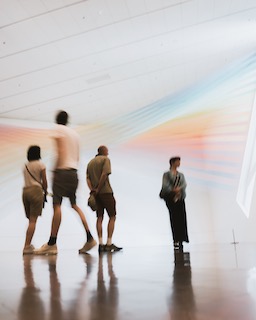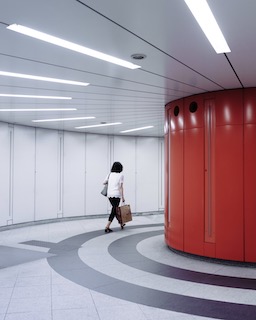Home
Latest publication
Neu·ro·aes·the·tics /ˌnu̇r-ō-es-ˈthe-tiks/ n.
A subdiscipline of cognitive neuroscience concerned with the neural basis of aesthetic experiences, which involve interactions with entities and events that evoke intense feelings, often of pleasure.
Themes
Beauty and Morality
Our brains respond automatically to beauty, and these automatic responses have downstream consequences in our attitudes, biases, and behavior.
Current projects on Beauty and Morality
The Built Environment and Wellness
Most people in the developed world spend more than 90% of their time in built environments. We're investigating how these environments affect our sense of well-being and can either promote or interfere with human flourishing.
Current projects on The Built Environment and Wellness
Engagement with Art
Humans have a decorative impulse, as evidenced by the aesthetic care taken in crafting objects and artifacts throughout human history. We're interested in understanding the nature of engagement with the arts—the paradox that seemingly non-utilitarian features of objects have such a persistent grip on us.
Current projects on Engagement with Art
Questions

Basic
The aim of neuroaesthetics is to understand neural systems that underlie aesthetic experiences and choices. This includes investigating the nature and neural basis of beauty, art, design, and architecture.
- Is there a common neural currency to beauty across different domains—e.g., bodies, nature, objects, spaces?
- How is the pleasure derived from art different from primary pleasures such as pleasure in food or sex?
- What distinguishes utilitarian from non-utilitarian choices?
- What are aesthetic emotions?
- How do negative emotions give rise to pleasure in aesthetic contexts?
- How does beauty influence moral decision making?
- What are the temporal dimensions of aesthetic experiences?
- How does context and education affect aesthetic experiences?

Translational
Neuroaesthetics applications are relevant to medicine and beyond into domains of society and culture.
- How might aesthetic experiences be used therapeutically?
- How might an understanding of psychological and neural responses to constructed spaces contribute to architectural design?
- How does engagement with aesthetics and the arts contribute to well-being?
- How does aesthetics influence product design and marketing?
- How can aesthetics facilitate learning?
PCfN on BlueSky
-
Tuesday, November 18, 2025
A few of our lab members are involved in organizing this meeting and it’s sure to be a blast. Hope to see you there! [contains quote post or other embedded content]
-
Tuesday, November 4, 2025
We are recruiting for a paid VR study! If you’ve been wanting to try Apple Vision Pro, here’s your chance.
-
Friday, October 24, 2025
Road trip down to Maryland! How far would you travel for a special participant group?




